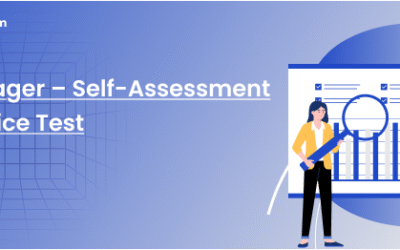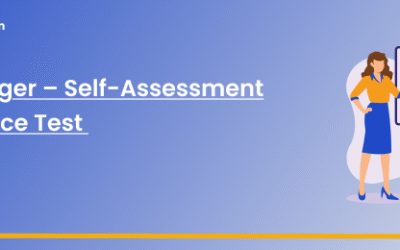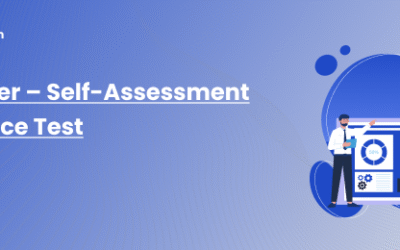What is Absence Management
In today’s fast-paced working environment, absence management plays a crucial role in ensuring the smooth operation of businesses. Whether it’s due to sickness, personal circumstances, or vacation, employee absences can have a significant impact on productivity and overall team morale. So, what exactly is absence management? Essentially, it involves implementing strategies and processes to effectively handle and minimize employee absences.
Absence management encompasses a range of practices, including tracking and monitoring employee leave, maintaining accurate records, implementing absence policies, and providing support for employees during their absence. By having a comprehensive absence management system in place, organizations can better plan and allocate resources, reduce disruption caused by absences, and ultimately improve operational efficiency.
Moreover, effective absence management goes beyond just tracking and managing absences. It involves promoting a healthy work-life balance, fostering a supportive work culture, and implementing proactive measures to prevent absences in the first place. Ultimately, a well-designed absence management strategy can lead to increased employee satisfaction, reduced turnover, and enhanced overall productivity.
Understanding and implementing effective absence management practices is essential for any business seeking to optimize their workforce and create a positive work environment. By prioritizing absence management, organizations can ensure they have the tools and strategies necessary to address employee absences in a proactive and productive manner.
Importance of Effective Absence Management
The significance of effective absence management cannot be overstated. At its core, it’s about more than simply keeping track of who is not at their desk; it’s about understanding the nuances of workforce dynamics and the ripple effect that absences can have throughout an organization. When employees are absent, it’s not just their workload that’s affected; it’s the capacity of the team, the delivery of services, and the company’s bottom line.
A robust absence management strategy ensures that businesses are not left vulnerable to the unpredictability of employee absence. It enables managers to swiftly adjust workloads and reassign tasks to maintain productivity levels. Furthermore, by analyzing absence patterns, organizations can identify potential issues within the workplace, such as stress or poor working conditions, which may be causing higher than average absence rates.
Moreover, effective absence management is integral to creating a supportive environment where employees feel their well-being is a priority. This in turn fosters a more dedicated and loyal workforce. The presence of clear policies and a fair approach to managing absences can also enhance an organization’s reputation as a fair and desirable employer, making it easier to attract and retain top talent.
Common Causes of Employee Absences
Employee absences arise for a multitude of reasons, and understanding these can help organizations develop more targeted absence management strategies. Health issues are among the most frequent causes of short and long-term absences. These can range from common colds and flu to more serious conditions requiring extended periods away from work. Mental health is also becoming an increasingly recognized reason for absence, with stress, anxiety, and depression leading to significant time off for many employees.
Personal circumstances also contribute to employee absences. These can include family emergencies, bereavement, or the need to care for a sick relative. Additionally, work-life balance plays a crucial role; without it, employees may feel the need to take time off to recover from burnout or to address personal matters that they cannot otherwise attend to due to a demanding work schedule.
It’s also important to note that not all absences are unplanned. Employees will take leave for reasons such as holidays, maternity or paternity leave, and sabbaticals. While these are typically scheduled in advance, they still require careful management to ensure that their impact on the business is minimized.
The Impact of Absenteeism on Businesses
Absenteeism can have a profound impact on businesses, affecting various aspects such as financial performance, team dynamics, and customer satisfaction. The direct costs are perhaps the most obvious; these include the loss of productivity and the potential need to pay for overtime or temporary staff to cover absent employees. However, there are also indirect costs that are less immediately apparent but equally detrimental.
For instance, frequent absences can lead to an increased workload for other team members, potentially causing stress and a drop in morale. This can create a vicious cycle where stress leads to further absences, exacerbating the issue. Moreover, the disruption caused by absenteeism can affect the quality of service or products provided by a business, damaging its reputation and potentially leading to a loss of customers or clients.
In the long term, high levels of absenteeism can signal deeper issues within an organization, such as poor management practices or an unsupportive work environment. This can lead to higher staff turnover, with the associated costs of recruitment and training new employees, not to mention the loss of knowledge and experience when staff leave.
Strategies for Effective Absence Management
Developing and implementing effective absence management strategies is crucial for mitigating the negative effects of absenteeism. One key strategy is the development of a clear and comprehensive attendance policy. This policy should outline the expectations for attendance, the process for reporting absences, and the consequences of unauthorized or excessive absences. It should be communicated clearly to all employees and consistently enforced.
Another strategy involves the proactive management of employee well-being. This can include initiatives such as health and wellness programs, stress management workshops, and the promotion of a healthy work-life balance. By investing in the health and happiness of employees, organizations can reduce the incidence of absences due to illness or stress.
Effective communication is also a cornerstone of successful absence management. Regular check-ins with employees can help managers identify potential issues before they lead to absences. Additionally, when absences do occur, it’s important to maintain communication with the absent employee, where appropriate, to offer support and manage their return to work smoothly.
Creating an Absence Management Policy
An absence management policy lays the foundation for how an organization will handle absences. It should be crafted with care, taking into consideration the unique needs and culture of the organization. The policy should include clear definitions of different types of leave, such as sick leave, personal leave, and vacation time, and detail the procedures for requesting and approving leave.
The policy should also outline the organization’s approach to unplanned absences, including how they should be reported and what documentation, if any, is required upon return. This might include a doctor’s note for a medical absence or a death certificate in the case of bereavement leave.
In addition to the nuts and bolts of how to handle absences, the policy should reflect the company’s commitment to supporting employees. This could include provisions for flexible working arrangements or resources available to employees facing personal challenges. A comprehensive absence management policy not only helps manage absences but also demonstrates an organization’s commitment to its employees.
Tools and Technologies for Tracking Employee Absences
Advancements in tools and technology have greatly improved the ability of organizations to track and manage employee absences effectively. There are various types of software available that allow managers to easily record and monitor absences, often in real-time. These systems can also provide valuable data that can be analyzed to identify trends and patterns in absence, helping to inform wider absence management strategies.
Many absence management tools also come with additional features such as the ability to manage return-to-work processes, track the accrual of leave entitlements, and integrate with payroll systems. They can automate much of the administrative work associated with absences, freeing up managers to focus on more strategic aspects of absence management.
Choosing the right tools and technology for absence management will depend on the size and nature of the organization, as well as the budget available. However, investing in a robust system can pay dividends in terms of the time saved and the insights gained into managing employee absences.
Legal Considerations in Absence Management
When implementing absence management practices, it’s critical to be aware of the legal framework that governs employee rights and employer responsibilities. Legislation such as employment standards acts, disability discrimination laws, and data protection regulations all have implications for how absences can be managed.
For example, employers must ensure that their absence management policies and practices do not discriminate against employees with disabilities and that reasonable accommodations are made for such employees. Moreover, there are strict rules around the handling of personal data, including information about an employee’s health, which must be respected in the tracking and management of absences.
Failure to comply with legal requirements can result in significant penalties for organizations, not to mention damage to their reputation. It’s advisable for employers to seek legal counsel when developing absence management policies to ensure they are fully compliant with the law.
Best Practices for Managing Employee Absences
There are several best practices that can help organizations effectively manage employee absences. These include maintaining open lines of communication with employees, fostering a culture of trust and support, and being consistent in the application of absence policies. It’s also important to train managers and supervisors in how to handle absences sensitively and effectively, as they are often the first point of contact when an employee needs to take time off.
Another best practice is to regularly review and update absence management policies and practices to ensure they remain relevant and effective. This includes taking into account changes in legislation, workforce demographics, and the general business environment.
Lastly, it’s beneficial to engage employees in the process of managing absences. This can involve seeking their input on absence policies, providing education around the impact of absenteeism, and encouraging a proactive approach to managing their own health and well-being.
Conclusion and Key Takeaways
Absence management is a multifaceted challenge that requires a thoughtful and strategic approach. By understanding the causes and impacts of absenteeism and implementing effective management practices, organizations can minimize the disruption caused by absences and maintain a productive, healthy workforce.
The key takeaways for effective absence management include the importance of a clear policy, investment in tools and technology, compliance with legal requirements, and the promotion of a supportive work culture. With these elements in place, organizations can not only manage absences more effectively but also contribute to the overall well-being and satisfaction of their employees.
In the end, effective absence management is about more than just minimizing the negative effects of absenteeism; it’s about creating an environment where employees feel valued and supported, leading to a stronger, more resilient organization.




